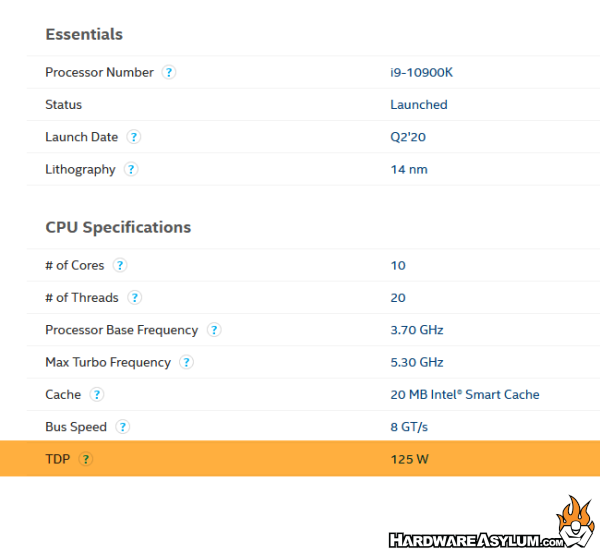Noctua NH-D12L Low Height Heatsink Review
Author: Dennis GarciaBenchmarks
The Noctua NH-D12L is designed for Intel Socket LGA2066 / 2011 / 1700 / 1200 / 1156 / 1155 / 1150 and all modern AMD processors. Here is an overview of the system and testing methodology
ASUS Maximux XII Hero – Z490 Chipset
Intel Core i9 10900k (3.7Ghz) Deca Core 10 x 32KB L2 Cache 10 x 256KB L3 Cache 20MB
Noctua NH-D12L
Noctua NH-U12S Redux
Deepcool AK620
The CPUID System Monitor was used to obtain and record system temperature data and being that this is a quad core processor we need something that will work across all of the cores at once. For this task we're using a new version of Prime95 (p95v255a) that will allow you to spawn (n) instances to test with.

Editors note: Even though the Windows 10 task manager reported 100% processor usage we could never attain a 100% of the rated heat output as documented by Intel when using Prime95 as a basis for that heat production. Knowing this we ran the stress test until the maximum temperature was attainted and stabilized.
Other things to consider when judging software induced heat output.
a) Clock throttling by the processor at high temperatures.
b) Normal software isn't designed to produce maximum heat output.
c) Variances of cooling temperature.
d) Variances in CPU load.
e) Inaccuracies in thermal diode readouts.
Of course the list goes on..
Our testing methodology is aimed to provide a real world look into this heatsink given the test system provided.

A C/W rating can quickly be calculated using this formula.
C/W = (CPU temp - Ambient temp)/(Variance(%) * CPU Watts)
Allowed variance for this test = 85%
CPU Watts = 125W (or 137W due to turbo clock)
0.23 C/W = (53C - 26C)/(.85(137W))
For this next test the CPU speed was cranked up to 5.1Ghz Sync across all cores and the test was re-run.

To calculate a new C/W rating for this test we will need to factor in the increased processor wattage. The formula and constants for this are listed below.
ocC/W = dCPU Watts * (ocMhz / dMhz) * (ocVcore / dVcore)2
ocMhz = 5100
dMhz = 4900
ocVcore = 1.3
dVcore = 1.2
The variance still applies for our C/W calculation
Allowed variance for this test = 85%
CPU Watts = 206W
0.23 C/W = (68C - 26C)/(.85(206W))
In our heatsink and waterblock tests we don't really focus on overall load temperatures but rather how well the product can remove heat given a specified heat load. Since this is a real world testing method we need to take into consideration real world variables and estimate tolerances. This is why we normally only apply 85% of the total wattage output to our heat calculations.
The resulting C/W number is used to rate how efficient a heatsink or waterblock is based on the given heat load. These numbers can be used to determine heat capacity, the larger the difference the less efficient the heatsink is. (aka not good for overclocking)
As the charts show we have a heatsink that can clearly handle the Core i9 10900k and while the 5.1Ghz overclock may not seem like much it does turn out to be quite a bit faster due to the frequency being locked across all of the processor cores. I would also like to call out that the C/W rating between the Default and Overclocking tests is identical which would indicate that the Noctua NH-D12L can handle a much higher load before it becomes saturated.
Keep in mind these calculations are provided for demonstration purposes only and may not reflect the actual lab tested C/W rating, but we're pretty close.

